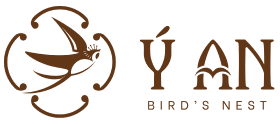News
Uses of bird’s nest for children and notes when using
**Uses of Bird’s Nest for Children and Important Notes When Using It**
Bird’s nest, a highly prized delicacy in traditional Chinese medicine, is rich in nutrients that can benefit growing children. However, while it offers numerous health advantages, it’s important for parents to understand how and when to introduce bird’s nest into their child’s diet to ensure safety and maximize its benefits. In this guide, we’ll explore the benefits of bird’s nest for children and key precautions to keep in mind.
### **Benefits of Bird’s Nest for Children**
1. **Boosts Immunity**
– **Why It’s Beneficial**: Bird’s nest is packed with proteins, amino acids, and antioxidants that help strengthen the immune system. Regular consumption can boost a child’s immunity, reducing their risk of catching colds, flu, and other infections, especially during school seasons.
– **How It Helps**: The glycoproteins found in bird’s nest enhance the body’s ability to fight off pathogens, helping children stay healthier.
2. **Supports Growth and Development**
– **Why It’s Beneficial**: Bird’s nest contains essential amino acids, calcium, and minerals that are crucial for a child’s physical development. These nutrients support the growth of bones, muscles, and tissues, making it particularly beneficial during growth spurts.
– **How It Helps**: Regular consumption can contribute to healthier bone development, better muscle function, and overall growth.
3. **Improves Cognitive Function**
– **Why It’s Beneficial**: The sialic acid in bird’s nest plays a vital role in brain development and cognitive functions. It helps enhance memory, focus, and concentration, which are crucial for school-aged children.
– **How It Helps**: Bird’s nest can support mental clarity and cognitive performance, making it a great supplement for children during exam periods or when they need to focus.
4. **Enhances Skin Health**
– **Why It’s Beneficial**: Bird’s nest promotes collagen production, which can improve skin health. This can be especially helpful for children prone to eczema or dry skin.
– **How It Helps**: Regular consumption can lead to softer, more hydrated skin, reducing skin irritation and promoting a healthy complexion.
5. **Improves Appetite**
– **Why It’s Beneficial**: Some children are picky eaters or have poor appetites. Bird’s nest is known to stimulate appetite, helping children consume more nutritious foods.
– **How It Helps**: Adding bird’s nest to a child’s diet can improve their appetite and encourage better eating habits, ensuring they get the nutrients they need.
### **Important Notes When Using Bird’s Nest for Children**
While bird’s nest is generally safe, there are several important considerations to keep in mind when introducing it to children:
1. **Suitable Age for Consumption**
– **Recommendation**: It is not advisable to give bird’s nest to children under the age of one. Infants have delicate digestive systems, and bird’s nest contains proteins that may be too complex for them to digest.
– **For Older Children**: Bird’s nest can be introduced to children over the age of three in small amounts. Always start with a small serving to check for any adverse reactions.
2. **Watch for Allergic Reactions**
– **Potential Risks**: Bird’s nest contains proteins that can trigger allergies in some children, especially those with existing food allergies. Symptoms may include itching, rashes, stomach pain, or difficulty breathing.
– **Precaution**: When introducing bird’s nest for the first time, give a small amount and observe your child for any signs of an allergic reaction. If any symptoms occur, discontinue use immediately and consult a doctor.
3. **Avoid Overconsumption**
– **Why It Matters**: While bird’s nest is nutritious, overconsumption can lead to digestive discomfort, such as bloating or stomach cramps, especially in young children.
– **Recommended Intake**: Limit the intake to about 1-2 tablespoons (5-10 grams) of bird’s nest per serving, 1-2 times a week for children. Consistency is more beneficial than quantity, so focus on moderate, regular consumption.
4. **Prepare Bird’s Nest Properly**
– **How to Prepare**: Bird’s nest is best prepared by soaking it in water and then simmering it at a low temperature with ingredients like rock sugar, dates, or goji berries for added flavor. Avoid adding excessive sweeteners, especially for young children.
– **Serving Suggestions**: You can serve bird’s nest as a warm soup or mix it into other dishes like porridge or smoothies to make it more appealing to children.
5. **Choose High-Quality Bird’s Nest**
– **Why It Matters**: Not all bird’s nests on the market are of the same quality. Some may contain additives, dyes, or preservatives that can be harmful, especially for children.
– **How to Choose**: Always purchase bird’s nest from reputable sources. Look for natural, unprocessed options and avoid pre-packaged bird’s nest drinks that may contain added sugars or chemicals.
6. **When to Serve Bird’s Nest**
– **Best Times**: For optimal nutrient absorption, it’s best to serve bird’s nest on an empty stomach, such as in the morning before breakfast or at night before bedtime.
– **Benefits of Timing**: Consuming bird’s nest before bedtime can help improve sleep quality, especially for children who have trouble sleeping.
### **Conclusion: Maximizing the Benefits of Bird’s Nest for Children**
Bird’s nest is a nutritious supplement that can offer numerous health benefits for children, from boosting immunity to enhancing cognitive function. However, it is crucial to introduce it carefully, considering your child’s age, potential allergies, and the appropriate serving size.
By following the guidelines above, parents can safely incorporate bird’s nest into their child’s diet, helping them grow healthier and stronger. Remember, the key to maximizing its benefits lies in moderation, preparation, and quality. Always consult a healthcare professional if you have concerns about introducing bird’s nest to your child, especially if they have existing health conditions or dietary restrictions.
By being mindful of these precautions, you can ensure that bird’s nest becomes a safe and beneficial addition to your child’s nutrition.

